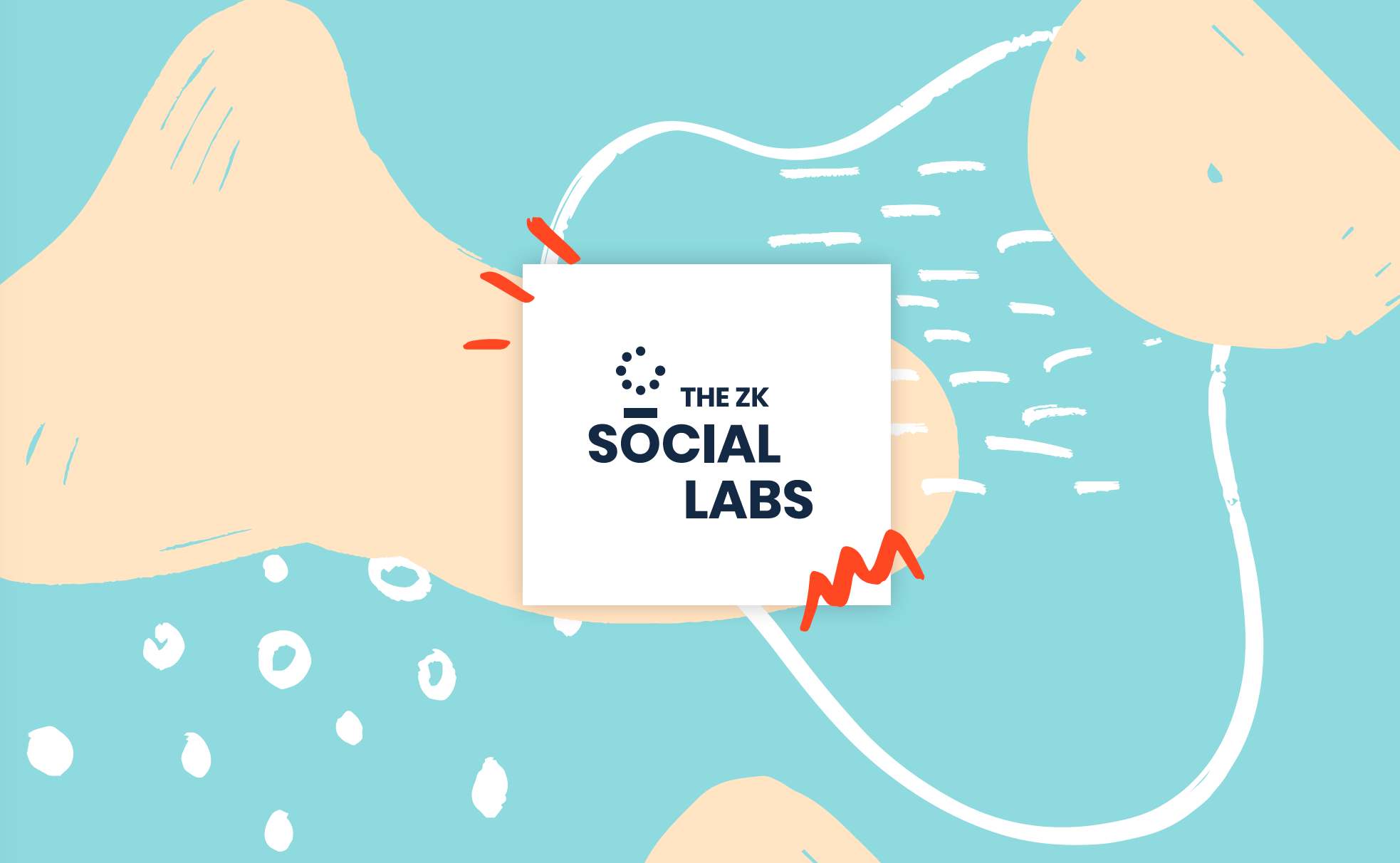
Clothed Loop
An awareness campaign to reduce the environmental impact of fashion and online shopping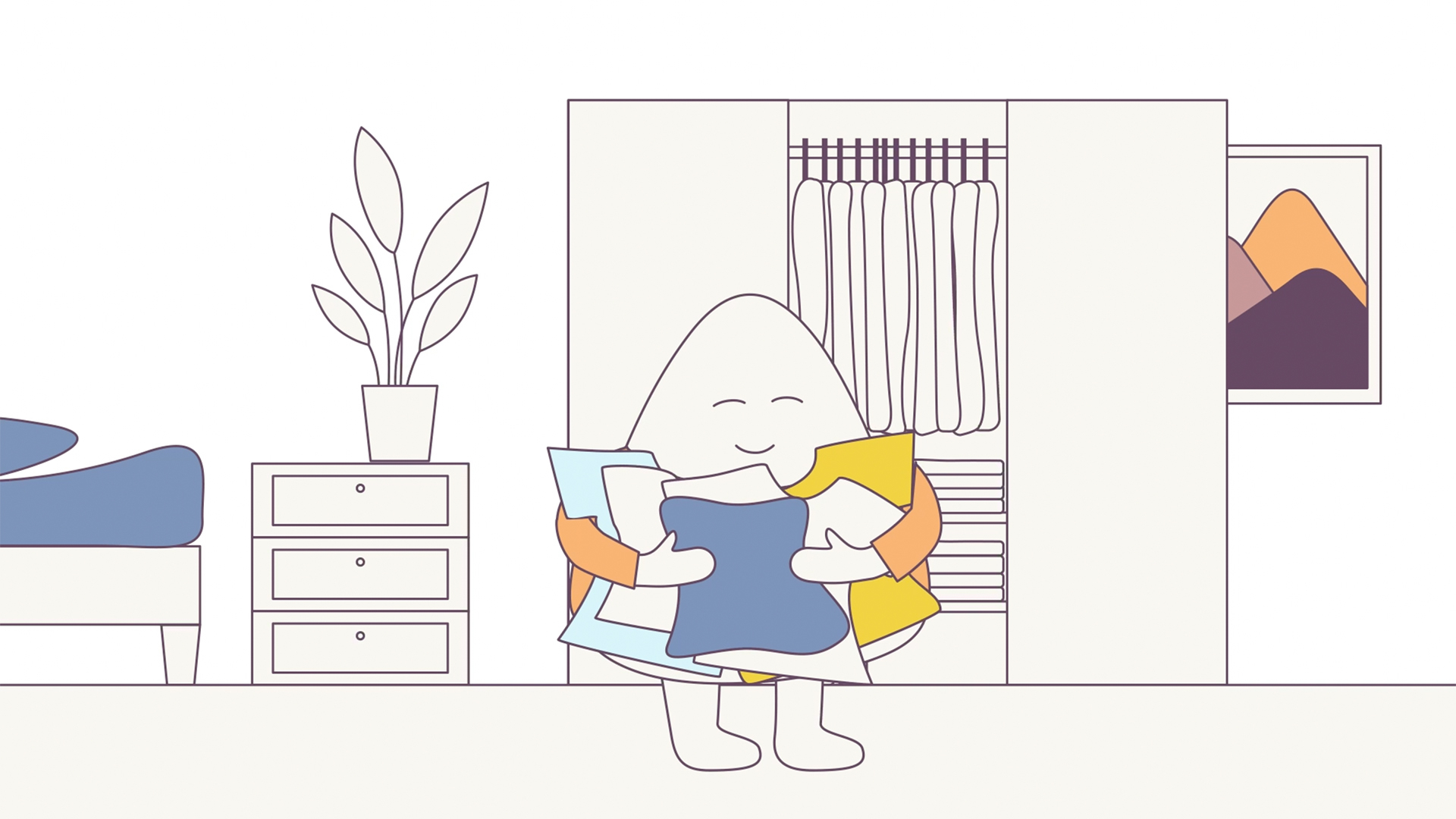
-
Client:
Personal Project
- Team:
-
Disciplines:
Concept, Storytelling, Animation
-
Schoolyear:
2020-2021
The fashion industry is far away from being fully circular. Too many clothes are wasted and incinerated in landfills – including new attire that was never used. As online shopping becomes more common and comfortable, the amount of returns increases unprecedently. While many consumers think their returns are re-packaged and re-sold, the truth is darker than that and what looks like an innocent normal behaviour has huge impact in the waste we produce. But how can we combat unnecessary returns, and reduce the impact of fashion on the environment?
Fashion is the second-largest polluter in the world. Every second, the equivalent of one garbage truck of textiles is burned in landfills. An estimated 500 billion-dollar value is lost every year due to clothing that’s barely worn and rarely recycled.
Despite the problems fast fashion is causing to our planet, the industry is still growing rapidly. Buying fashion items being this easy and affordable sends the wrong message and ignores the problems that come with it. And yet, we are buying more clothes than ever – the average consumer now buys 60% more clothing than they did 15 years ago.
Thus, the impact of our unsustainable behaviour on the environment is getting bigger and bigger. While this problem might be caused by the broad mass, it is not yet widely acknowledged.
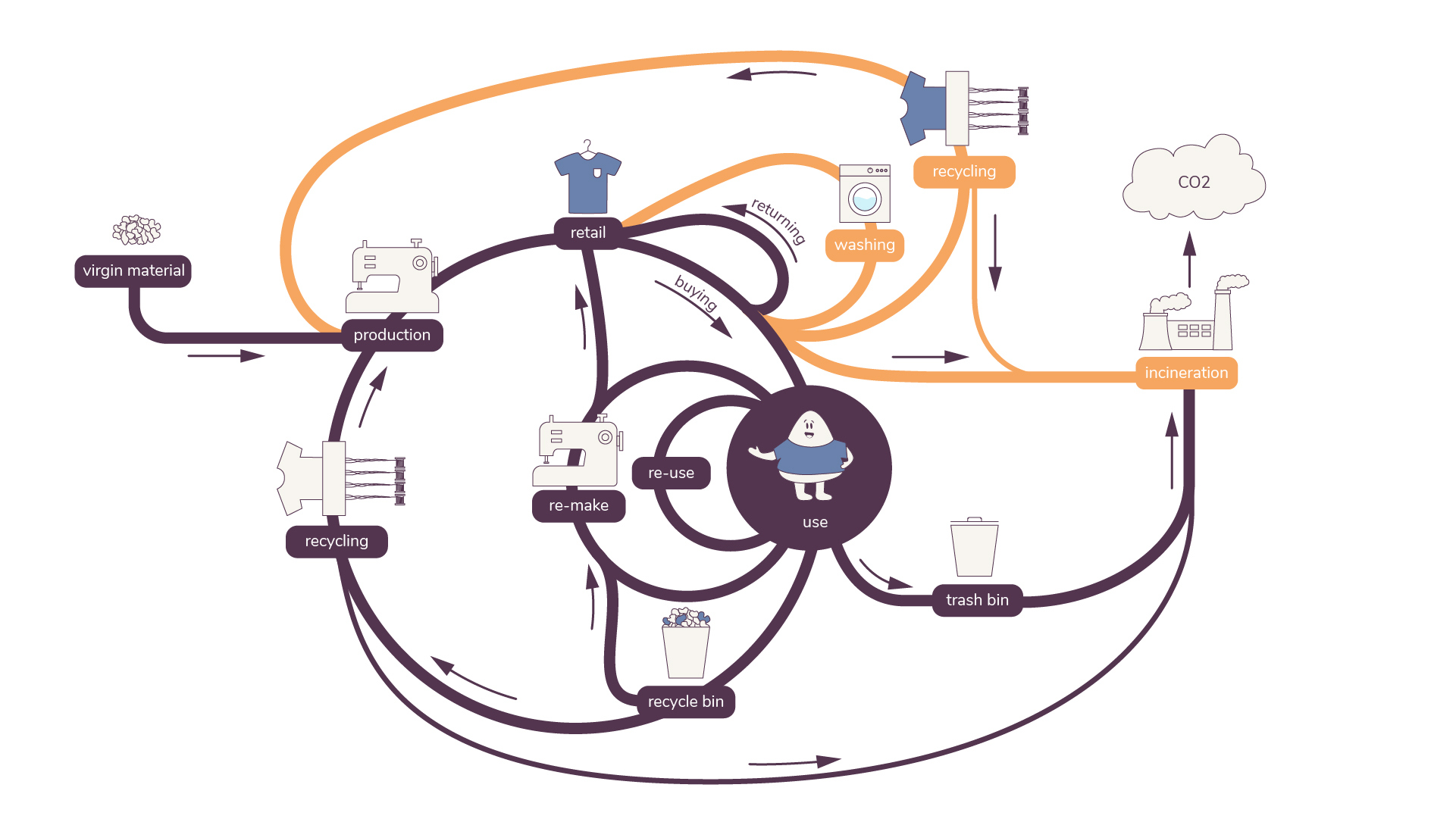
Changing Trends
Facing this challenge, we realised that there are already a lot of sustainable products and services on offer. But often they are neither implemented by the industry nor put into practice by the consumers. The reasons for this can vary. Sometimes it might be due to economic and practical reasons, but often the lack of knowledge, not only about the solutions but the problem itself, is the underlying reasons for missing action. Creating awareness is the first step in the course of this change of behaviour.

To achieve this, we decided to create a campaign that communicates the impact of online shopping and returns, especially in the fashion sector. As a medium, we chose videos, that would be supported by a website with more information and advice. To convey the message and create impactful communication, we made use of the technique of storytelling.
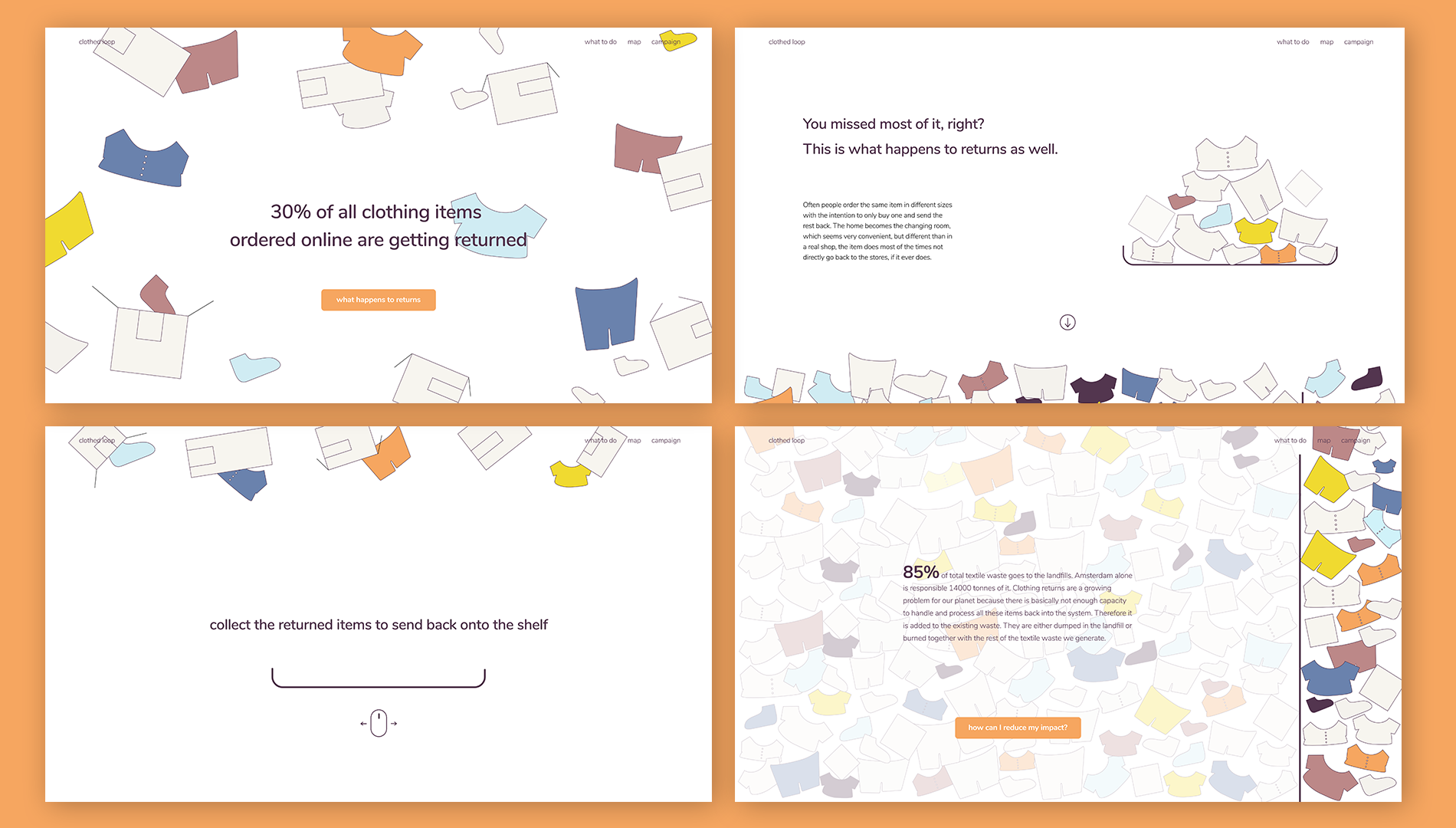
Research shows that narratives are impactful, as the human mind tends to organise learned facts into a story to make them meaningful. For the videos, we created a character that has certain similarities to the target audience in behaviour and emotions, based on our user research. When the viewer sees the character in the story, they might realise that they share the same behaviour and habits and hopefully reflect upon it and get inspired by the transformation this character goes through. In this way, we want to create a narrative that is relatable, and furthermore easy to understand. The chosen visual language, used both in the videos and the website, supports this.
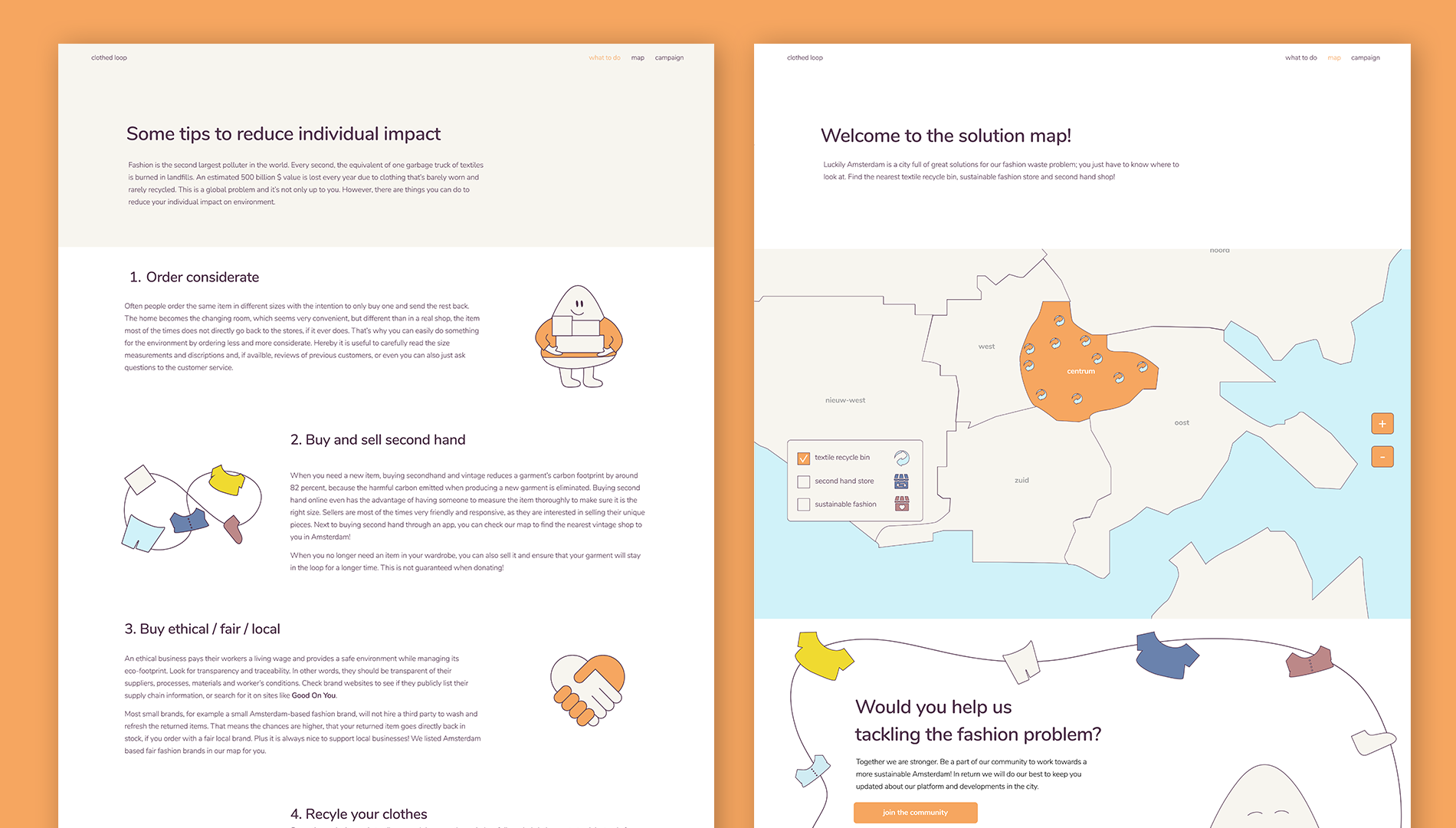
Telling a good story is not an easy task. In the beginning, we were being too literal and educative and realised we had to dive deeper into user research to find out more about the user’s needs, emotions and vulnerabilities. Knowing people’s motivation and feelings (e.g. how do they feel when buying new clothes?) allows to target their real needs and address them from an emotional point of view. After various iterations, we created a story that tries to connect emotionally by showcasing the transformation of the character.
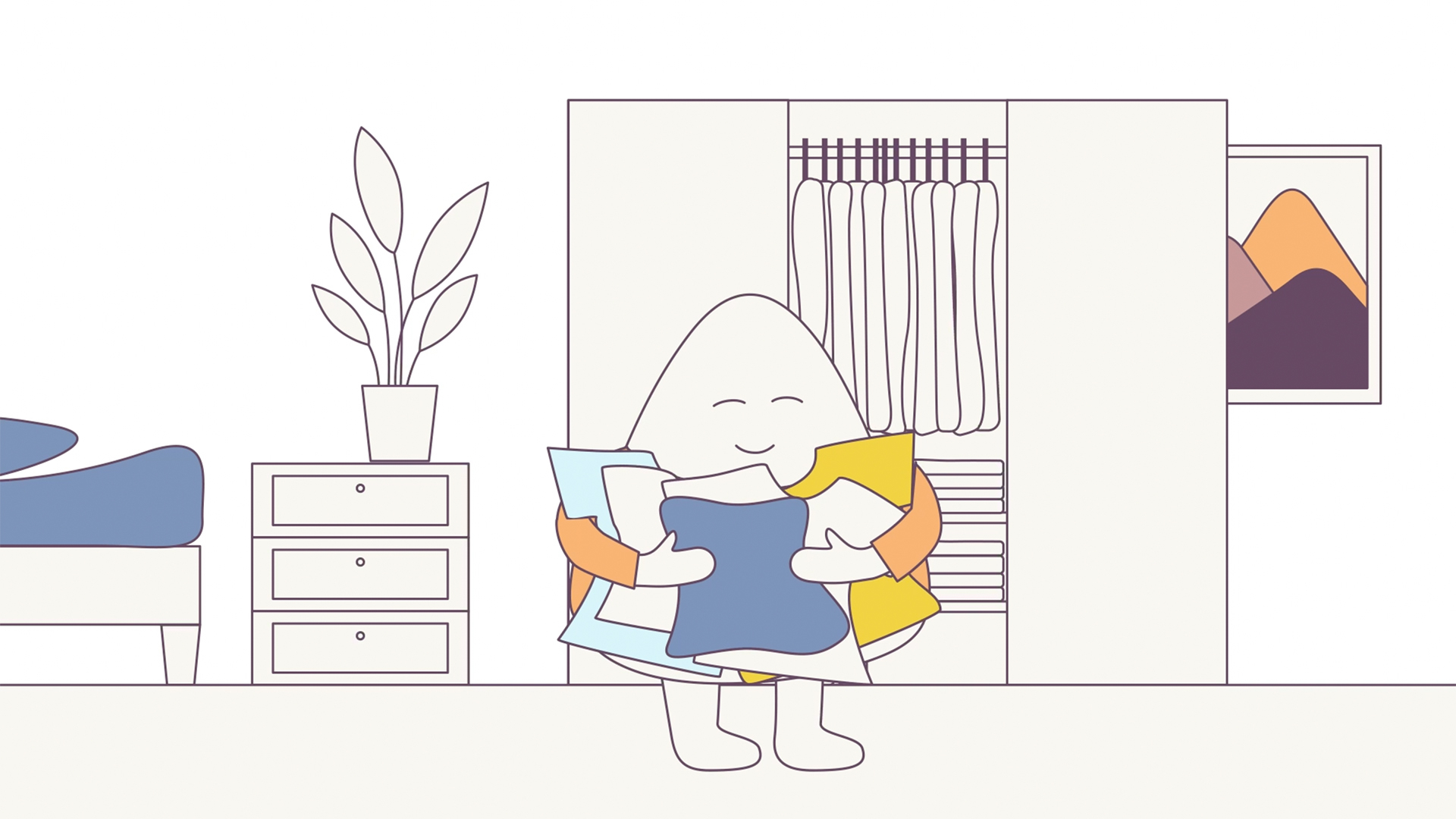
Watch the campaign video of Clothed Loop
